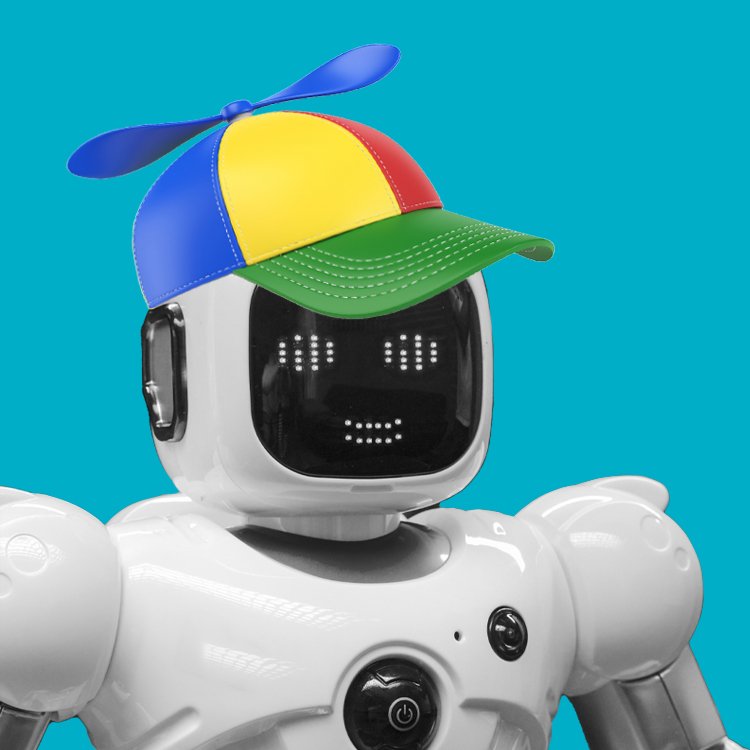Less Chat, More Hat
Oh, the humanity.
I’ve spent the last week thinking about the future of marketing, and it’s certainly an interesting topic to ponder, especially for any small business in Boise, Idaho. We’ve all seen it: Chat bots responding to our questions & redirecting us to their Frequently Asked Questions page, boosted social advertisements speaking to the power of AI-written ad copy, and even automated paid media mediums that deliver your ads to the best audience for you (like Google Ads or Facebook Ads).
These services have elevated the world of marketing and advertising. Curious how future marketing will be affected by automation, AI, and algorithms? How does all this new tech play together? These are the questions I aim to answer.
This week’s Sip & Strategy is about automation in the office, website, and how we humans interact with the inhuman.
Kick back in a cushioned seat and welcome to the Less Chat More Hat episode.
First off, I want to tip my hat (my hat idioms are next level today - more to come no doubt) to the concept of human interaction. If Covid has taught us anything these last few years, it’s that we crave connection with other people. Marketing is no different. In fact, the less human our marketing and advertising is, the less impactful it will be with our viewers, ultimately affecting the performance of any campaign. This is not to say that robot-like marketing is not useful, as it definitely has a role in the future of marketing. This leads us to our first point of interest, chatbots.
Chatbots
We’ve all been here before. You go to a website, you need help with some aspect of their service, and you can select to call or chat. We all know calling can be exhausting, so you opt to chat. Heck, the chat may have just popped up on your screen all on its own once you navigated to their home page. Before long, you start to get the creeping feeling that maybe there isn’t any blood flowing through veins on the other end of the screen. You realize you’re speaking to a chatbot.
What are chatbots? Oh, boy. Chatbots are a piece of software with a purpose of communicating to viewers while imitating a real human interaction. They are often used in customer service but are starting to see play with other non-marketing applications. Get a full breakdown of various life-changing chatbot uses from WordStream.
How do chatbots work? That’s an even more fun question. The simple version is that chatbots use the same base language processing technology as virtual voice tech, services like Apple’s Siri or Google Now. When you respond to a chatbot, it parses out different options to help determine what exactly you are asking (via an algorithm) and then dishes out a relevant answer using previous analytics and a database source of information it already has. That could be contact information like your name, location, and company, or behavioral information like what you viewed on the website before, or what you’ve previously typed to this chatbot service.
Most CMS’s offer inexpensive chatbot apps. If you use Wordpress, Squarespace, or Wix (to name a few), then you likely have access to a chatbot on your website. There are, of course, third party chatbot plugins that work with any website. There may not be better chatbot software than Zendesk, which has become a mainstay for any members of marketing chatbots anonymous. My personal favorite, however, is Hubspot’s chatbot service. With Hubspot being a CRM first, you get the added benefit of interaction with all of your sales & marketing data. Some chatbots are “smarter” than others, so definitely do your due diligence in finding the one that’s right for your business.
Paid Media Advertising Automation
Paid media. It’s a fun set of words meant to describe one thing: you paid for your marketing. In the digital space, we’re talking about paying for your ads to run. AI and automation have made running ad campaigns on platforms such as Facebook, Instagram, Google, Amazon, and others incredibly easier. You type in the demographics you want to target, the geographic area that is relevant to your audience, and their behavioral/interest topics and let the system do the rest.
With most of these platforms, you can set a goal type. With Google Ads, for example, you can give it a goal type like “Conversion”. This will tell Google to focus on viewers who are most likely to convert (conversion events can be set to ensure it’s what you are trying to accomplish with your campaign, like fill lead forms or online shopping cart checkouts). This type of automation saves you time and effort trying to find the specific narrowed audience and can be a huge leap forward in the optimization process; especially if managing ad campaigns are not your specialization.
AI Copywriters
The future is here, people. We now have machine-learning software that analyzes content and creates similar content based on a specific topic. It’s wild. You can use services like this for your blogs, content, ad copy, whatever you need. If your company delivers or needs content on a daily basis, a service like this may just be a godsend. Companies like Jasper can really save some time for you in your marketing efforts.
While we all like these innovations, it’s always important to remember what makes marketing tick. It’s the feeling. The vibe. The story. The lifeblood of human connection. Always chase after taking your customers on an adventure worthy of their investment; and use some of these tools to help make that happen.

